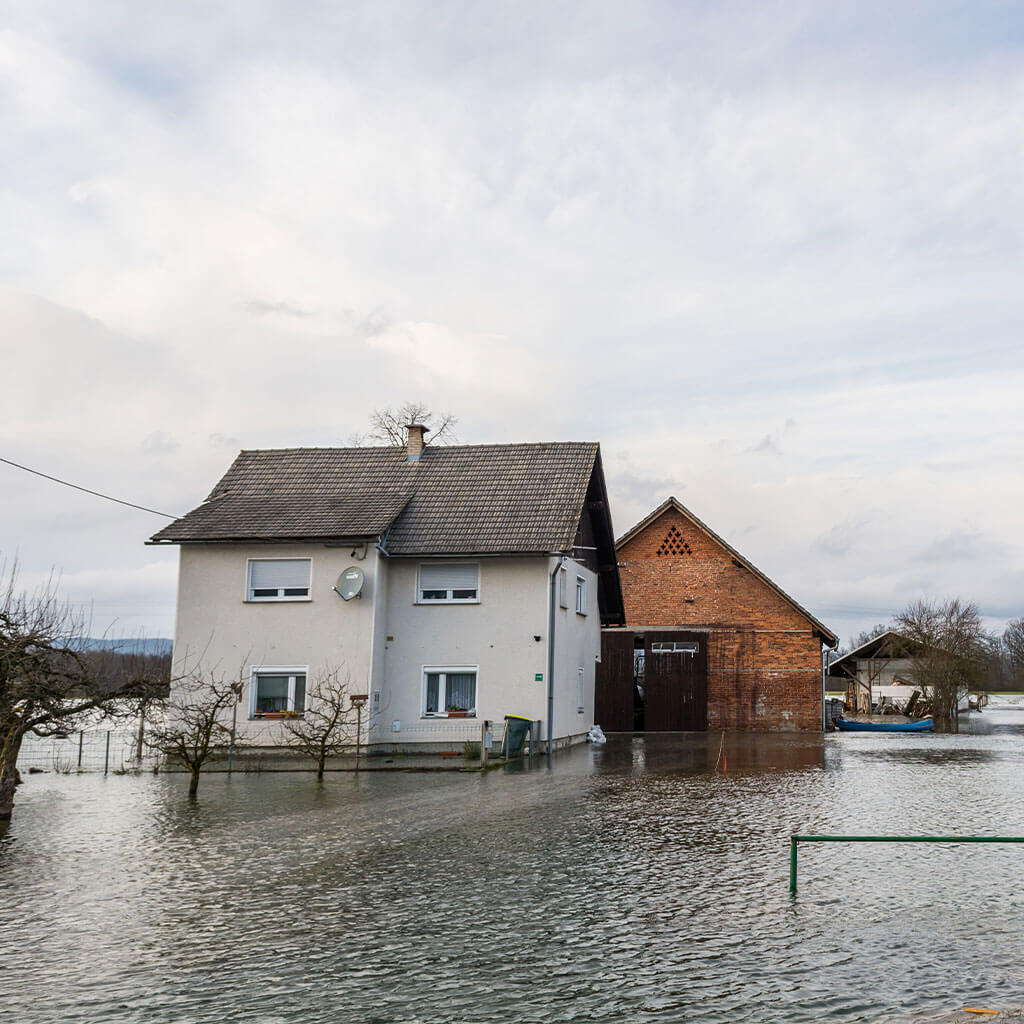Inspired for an Adventure? Check out Beef Stroganoff - Pouch and Beef Stew - Pouch
Free Ground Shipping On All Orders
Over 2,100 Reviews
Add description, images, menus and links to your mega menu
A column with no settings can be used as a spacer
Link to your collections, sales and even external links
Add up to five columns
Add description, images, menus and links to your mega menu
A column with no settings can be used as a spacer
Link to your collections, sales and even external links
Add up to five columns


A flood is among the most universal of natural disasters: It can happen just about anywhere. That includes parched desert country, where canyons and washes are highly vulnerable to flash floods. And that includes urban areas, too, where heavy rainfall over a paved-over cityscape often generates violent runoff and overspilling channelized streams, and where storm drains may back up from clogged debris or simply the magnitude of precipitation. Whether a seasonal floodplain overflow or a catastrophic 500-year inundation, floods can kill and sicken, rack up billions of dollars in property and infrastructure damage, and impede transportation and services for days and weeks on end. (The National Weather Service tallies some pretty sobering yearly flood statistics.) Here’s how to ready yourself for high water in your neck of the woods!
Waterlogged Primer: The Nature of Floods
Floods come in all shapes, sizes, and timetables. They might impact a single waterfront neighborhood or swamp entire towns or regions. Hydrologists distinguish between slow-onset floods, which may slowly build from multiday rainfall and persist for weeks or months, and rapid-onset floods, “flashier” affairs that rise and fall more quickly. Streams and rivers may leap their banks due to heavy and/or prolonged precipitation; they may also flood from spring snowmelt. Some parts of the country often see inundations from ice jams. (For instance, the Red River of the North, which flows, rather unusually, poleward from Minnesota and North Dakota to Lake Winnipeg, is notorious for regular flooding not only due to its pancake-flat basin, but also because its southern watershed often melts out earlier than the northern portion, where lingering ice can dam the river’s swollen springtime waters.) Ferocious as the winds of hurricanes and tropical storms most definitely are, the most lethal effects of these tempests tend to be flood-related: from storm surges—where cyclone winds pile up ocean water inshore—and inland deluges caused by torrential rains. Storm surge can also coincide with high tide to result in a so-called “storm tide,” which may pummel coastal areas with waters better than 20 feet above the normal tidal reach. Floods, of course, can also stem from the failure of artificial infrastructure: breached dams or levees, for instance, or burst pipes.
Flood Risks
Sound flood preparation means understanding just how dangerous high water can be. Overland floodwaters are deceptively powerful: A mere six inches can knock you clear off your feet, and only a foot or two can sweep a car away. (Cars can also stall out in surprisingly shallow water, leaving occupants vulnerably stranded.) Overflow may also be contaminated, and there’s also the risk of electrocution. In short, whether you encounter them while evacuating by foot or vehicle or inside your home, avoid entering floodwaters if at all possible. Besides drowning, electrocution, waterborne illness, and other directly life-threatening effects, flood impacts can also include damaged or destroyed property, blocked transportation corridors, interrupted power, and polluted municipal water supplies.
Flood Preparation for Your Home
If you live in the U.S., you can assess the vulnerability of your home to flooding by looking up your address via the Federal Emergency Management Agency’s (FEMA) Flood Map Service Center. The agency generates Flood Insurance Rate Maps (aka FIRMs)that portray high-risk, moderate- to low-risk, and undetermined-risk flood hazard areas. Federal law requires many home- and business owners in high-risk areas to obtain flood insurance. It’s not required in moderate- to low-risk areas, but damaging flooding can still occur in these zones: According to FEMA, they account for a third of flood-related federal disaster assistance and better than 20 percent of National Flood Insurance Program claims. If you live in a place prone to flooding, it’s smart to take measures to protect your house, such as:- waterproofing your basement;
- installing a backup battery-powered sump pump;
- elevating electrical systems and appliances such as furnaces at least 12 inches above the projected flood level; and
- securing fuel tanks.
Putting Together a Flood File
As part of your flood checklist, FEMA recommends maintaining a “personal flood file,” a collection of essential documents kept in a waterproof container. Said file should include copies of your insurance information and a detailed inventory of major possessions, including serial numbers and receipts for appliances.
Flood Checklist: Emergency Kit
You may need to evacuate in the face of a flood and be unable to return home for an extended period of time, and goods and services may well be disrupted during and after the inundation. This means it’s vital you have an emergency readiness kit already assembled before a deluge comes knocking at the door. This should include water and non-perishable food provisions (such as Mountain House Just In Case…® supplies) for at least three days and preferably a week-plus. Your flood preparedness/flood evacuation kit(s) should also include first-aid, any necessary prescriptions and toiletries, insulated clothing (including raingear), sleeping bags and/or blankets, flashlights (and backup batteries), a charged cellphone, spending cash and credit cards, and other essentials. A battery-operated or hand-crank NOAA Weather Radio is also a valuable tool to have on hand, as it allows you to closely monitor real-time flood conditions.(Check out this FEMA factsheet for a full flood checklist.)
Developing a Flood Action Plan
Evacuating ahead of or during a flood is much easier when you have some sense of where you’re going. This means developing a flood action plan that everyone in your household’s well versed in. Identify evacuation routes to high ground in your neighborhood as well as around workplaces and schools. In the event of a large or long-lasting flood, you may need to take refuge out of the region, so make a list of friends or relatives you might be able to stay with. Make sure everyone’s phone has emergency numbers programmed in, and identify a family member out of the region to serve as an emergency point of contact. Practice makes perfect, right? "Dry runs" (if you'll pardon the pun) put the finishing touches on any flood evacuation plan. Carry out periodic simulated flood drills with your family so everyone's familiar with the step-by-step. Besides instilling confidence, these exercises can help you identify and fix any potential hiccups in your plan.
Flood Forecasts & Evacuation Orders
Pay attention to those meteorologists: The National Weather Service issues a “Flood Watch” (or “Flash Flood Watch”) when conditions are ripe for flooding; a “Flood Warning” (or “Flash Flood Warning”) means a flood’s underway or soon to occur. It’s also a good idea to keep tabs on alerts from the NWS River Forecast Centers, which monitors current and predicted river levels. It goes without saying (but we'll say it anyway): Take any evacuation orders issued by local or state officials seriously. The sooner you can seek safe high ground ahead of a flood, the better: Traffic’s liable to be heavy on major evacuation routes.
Imminent Flood Preparation
Besides the general measures we outlined above, you may need to implement some last-minute prep if a flood watch or warning has been issued. (But remember, again: Evacuation is the most important course of action in many cases, and you should absolutely abide by any evacuation orders issued by local or regional officials.) Move important documents, rugs, furniture, and other possessions to higher floors of your house. If directed to do so, you may also end up shutting off utilities and/or water to your house. Clear your gutters and downspouts of twigs and other debris in anticipation of downpours. Don’t let floodwaters catch you off-guard: Prepare a flood checklist, assemble an emergency kit, come up with (and practice) an evacuation plan, and stay abreast of weather/hydrographic forecasts and any emergency declarations. You can learn more about flood prep and response over at Ready.gov. Here’s to staying dry—and safe!
How to Rotate Emergency Food: FIFO and Other Rotation Methods

The First 72 Is on You: Survival Kit Checklist + Printable PDF


Stay Hungry for Adventure
Sign Up for Delicious Outdoor Meals & Exclusive Offers!
By clicking ‘Join Now’, I agree to the Terms of Service and Privacy Policy.


Join the adventure
©2025 Mountain House — All Rights Reserved.
Your Cart is Empty
Continue ShoppingYour Cart
Subtotal
$0.00
EXPRESS PAYMENT METHODS AVAILABLE IN CHECKOUT
Taxes and Shipping Calculated at Checkout
Your ExpertVoice deal.
$[Deal Price]
$[Original Price]
Discount applied at checkout.
On sale now — lower than your ExpertVoice discount.
Not eligible for ExpertVoice discount.














